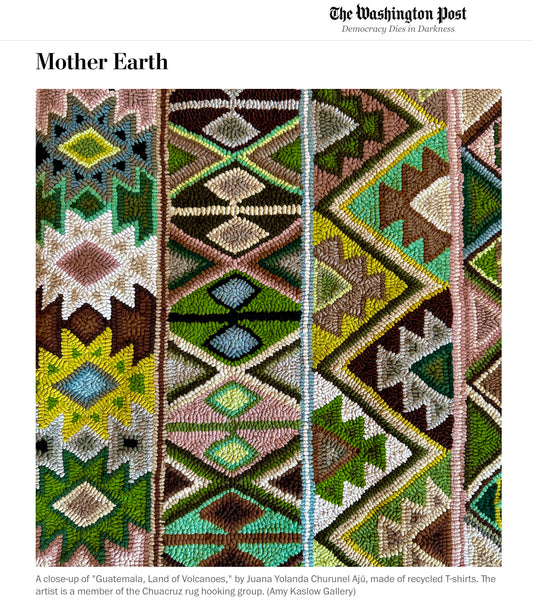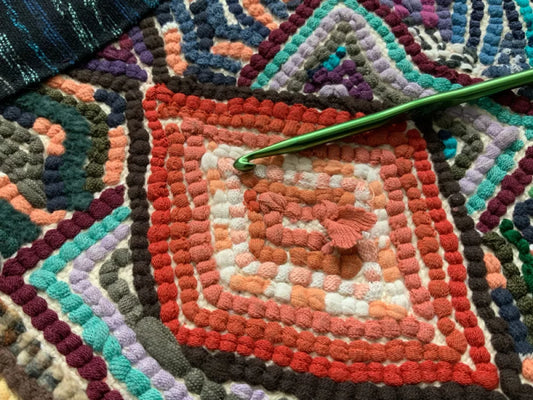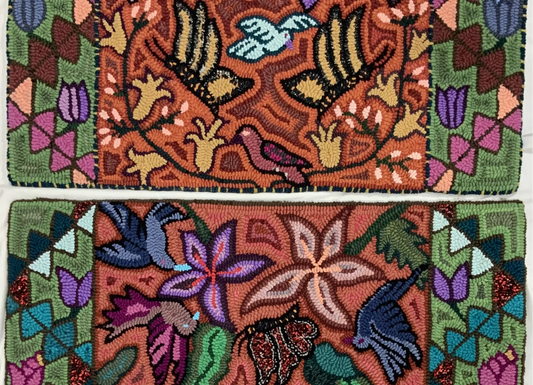Rugs have a different significance in every culture— here in our Guatemalan culture, rugs have a distinct meaning connected to Semana Santa (Holy Week). During this season, we observe magnificent alfombras (rugs) made by believers for the different processions and activities of Semana Santa. No matter what your religion, these works of art made from sawdust, flowers, and fruits are visually impressive.

The origin of the ritual
The alfombras of Semana Santa originated as part of a ritual to consecrate the passage of a divine entity. This practice was characterized by decorating the floor with flowers, leaves, and fruits to indicate the divine being’s path. The creation of these alfombras in Guatemala is part of the religious syncretism (blending of cultural traditions) that characterizes the region.
Marcela Rodríguez, professor of history and passionate scholar of Semana Santa traditions, comments: “The original [Maya] custom was to place flowers in the path of the deities. The Spanish, when colonizing and evangelizing, took Maya rituals and fused them with Catholic dogma to encourage religious conversion. That is to say, they included parts of the original Maya belief system in order to achieve the result of evangelization. For the Maya people, their gods and deities could not touch the ground, nor could the cofrades (religious brotherhoods), because of their contact with religious images. And so they would walk on an alfombra.
“The objective in Holy Week is to make an offering to the religious icon, to ask for blessing on the houses by which the icon passes. It’s for that reason that there are rugs made of fruits and vegetables—the fruits of the earth, the source of life according to Maya beliefs and cosmovision. As pieces of art, part of the tradition in making these rugs is to lay them before the feet of the Lord.”
An evolution in the alfombra designs
This fusion, or cultural and religious syncretism, resulted in changes over time as alfombras were made from sawdust and designs became more artistic. Alfombras today use a wide range of colors and patterns. The creation of an alfombra is almost always a collective effort, in which an entire family or neighbors from a specific block or sector gather to collaborate. It’s a voluntary activity, and much beloved by the participants.
We can appreciate this type of alfombra for its ephemeral quality, almost like a sand castle. Each alfombra is a temporary work of art, and its beauty will end with the passage of the procession for which it was created.

Inspiring the artists of Multicolores
The rugs and embroideries created by Multicolores artists are similar to the Semana Santa alfombras in many ways: they are colorful and frequently feature flora, fauna, and designs traditional of Guatemala. Sometimes they have geometric figures, and other times the designs are more abstract. During the first years of Multicolores, various artists observed that their work creating rugs from recycled materials related to the tradition of creating rugs for Semana Santa.
Fortunately for us, in the case of Multicolores artists’ rugs, they last much longer than their Semana Santa cousins! Similarly the embroidery artists have often found inspiration in the different traditions of Semana Santa, documenting these unique rituals with stitches.
– Alejandra Assardo, Production Coordinator




